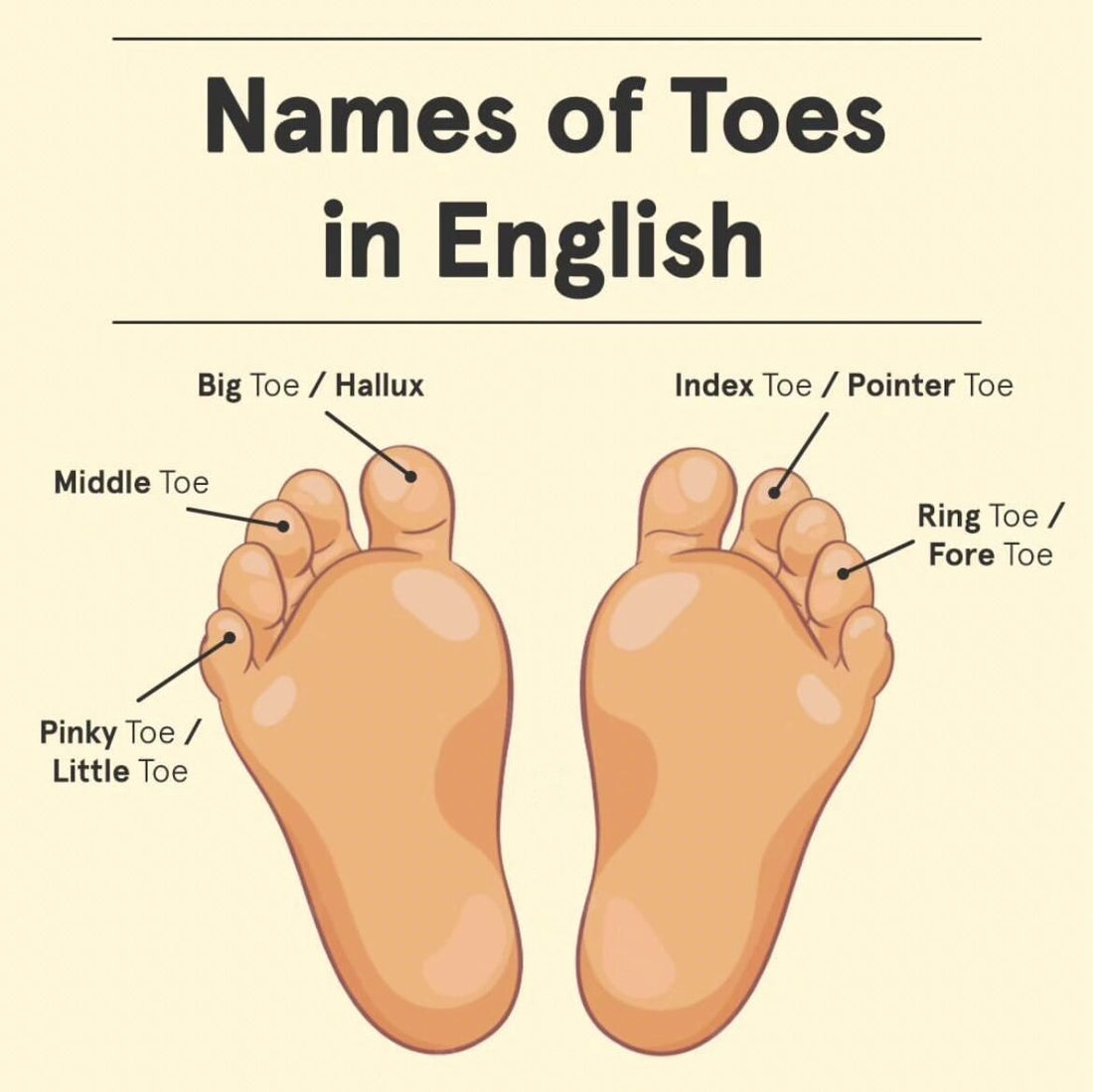
Foot Pain Chart: Identify the Cause of Your Foot Pain and Find Relief
Share
Foot pain is a common yet often misunderstood issue that affects millions of people worldwide. Whether it's a dull ache, a sharp stab, or a persistent burning sensation, understanding where your foot hurts can help identify the cause and guide you to the right treatment. That’s where a foot pain chart becomes an essential tool.
In this blog post, we’ll walk you through a detailed foot pain chart, explaining the common causes of pain in different areas of the foot — from the toes to the heel — and suggest remedies to help you feel better.
🔍 What Is a Foot Pain Chart?
A foot pain chart is a visual or descriptive guide that maps pain locations on the foot to likely causes. It’s a helpful reference for people who want to better understand the nature of their foot pain and whether they should seek medical attention.
The foot is a complex structure made up of 26 bones, 33 joints, and over 100 muscles, tendons, and ligaments — all working together to support your weight and help you move. Because of this, pain can appear in very specific locations and indicate different underlying issues.

📌 Common Foot Pain Areas and What They Mean
Let’s break down the most common areas of foot pain using a chart-style explanation:
1. Big Toe Pain
- Possible Causes: Bunion (Hallux Valgus), Gout, Turf Toe, Arthritis
- Symptoms: Swelling, redness, misalignment of the toe, stiffness
- Fixes: Wear wide-toe shoes, use toe separators, bunion splints, anti-inflammatory meds
2. Ball of the Foot (Metatarsalgia)
- Possible Causes: High-impact activity, improper footwear, Morton’s neuroma
- Symptoms: Burning or sharp pain, numbness, swelling
- Fixes: Orthotic inserts, cushioned shoes, reduce impact activities
3. Arch Pain
- Possible Causes: Plantar fasciitis, flat feet, overpronation
- Symptoms: Pain when walking or standing, stiffness in the arch
- Fixes: Arch support insoles, stretching exercises, night splints
4. Heel Pain
- Possible Causes: Plantar fasciitis, Achilles tendinitis, heel spurs
- Symptoms: Pain in the morning or after rest, tenderness at heel base
- Fixes: Ice therapy, proper footwear, heel cups, physical therapy
5. Outer Foot Pain
- Possible Causes: Stress fracture, peroneal tendonitis, wearing tight shoes
- Symptoms: Pain on the pinky toe side, swelling, instability
- Fixes: Rest, compression, avoid narrow shoes, supportive footwear
6. Top of the Foot
- Possible Causes: Tendonitis, arthritis, tight shoelaces, midfoot sprain
- Symptoms: Throbbing pain, bruising, tenderness
- Fixes: Adjust footwear, rest, anti-inflammatory medication
7. Toes and Nails
- Possible Causes: Ingrown toenails, hammertoes, fungal infection
- Symptoms: Redness, pressure, nail deformity
- Fixes: Proper nail care, footwear with toe space, medical treatment
🦶 When Should You See a Doctor?
Not all foot pain can or should be treated at home. You should consult a healthcare provider if:
- Pain is severe or sudden
- You have swelling that doesn’t go down
- There is an open wound or signs of infection
- Pain persists beyond a few days of rest
- You experience numbness or tingling
✅ Preventing Foot Pain: Simple Tips
- Wear the right shoes: Wide toe box, good arch support, proper size
- Stretch and strengthen: Especially the calves, arches, and toes
- Take breaks: Avoid standing or walking for long hours
- Maintain a healthy weight: Less stress on your feet
- Use orthotics if needed: Custom or store-bought inserts can make a big difference